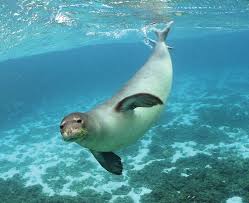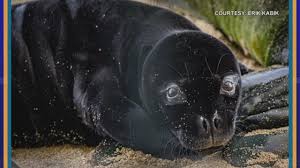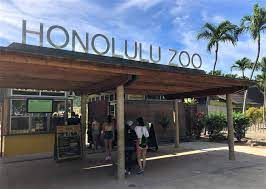The Endangered Beauty: Protecting the Hawaiian Monk Seal

The Hawaiian Monk Seal: A Unique Marine Mammal
The Hawaiian Monk Seal, scientifically known as Monachus schauinslandi, is a rare and critically endangered marine mammal endemic to the Hawaiian Islands. With a population of only about 1,400 individuals, these seals are one of the most endangered seal species in the world.
One of the most distinguishing features of the Hawaiian Monk Seal is its unique appearance. These seals have a sleek, dark gray coat with light patches on their belly. They are typically around 7 feet in length and weigh between 400 to 600 pounds. Their streamlined bodies make them well-adapted for swimming and diving in the ocean.
These solitary creatures spend most of their time at sea, foraging for fish, octopus, and other marine animals. However, they also come ashore to rest and give birth to their pups. The sandy beaches and rocky shores of the Hawaiian Islands provide important habitat for these seals.
Unfortunately, the Hawaiian Monk Seal faces numerous threats to its survival, including habitat loss, entanglement in fishing gear, disease, and human disturbance. Conservation efforts led by organizations such as NOAA (National Oceanic and Atmospheric Administration) aim to protect and preserve these remarkable animals.
By raising awareness about the plight of the Hawaiian Monk Seal and supporting conservation initiatives, we can help ensure that this unique marine mammal continues to thrive in its natural habitat for generations to come.
6 Essential Tips for Protecting Monk Seals and Their Habitat
- Monk seals are a critically endangered species, so it’s important to respect their habitat and not disturb them.
- If you encounter a monk seal on the beach, keep your distance and do not approach them.
- Avoid feeding monk seals as it can disrupt their natural behavior and diet.
- Fishing gear poses a threat to monk seals, so make sure to properly dispose of any fishing equipment to prevent entanglement.
- Beach clean-ups help protect monk seals by reducing marine debris that they could ingest or get entangled in.
- Support conservation efforts for monk seals through donations or volunteering with organizations dedicated to their protection.
Monk seals are a critically endangered species, so it’s important to respect their habitat and not disturb them.
Monk seals are a critically endangered species, so it’s crucial to respect their habitat and avoid disturbing them. As one of the most endangered seal species in the world, Hawaiian Monk Seals face numerous threats to their survival. By being mindful of their presence and giving them space to rest and forage, we can help protect these remarkable marine mammals and contribute to their conservation efforts.
If you encounter a monk seal on the beach, keep your distance and do not approach them.
When encountering a monk seal on the beach, it is crucial to keep a safe distance and avoid approaching them. Monk seals, like many wild animals, require space and privacy to rest and nurse their pups. Approaching them can cause stress and disturbance, potentially impacting their well-being. Respecting their space is essential for the protection and conservation of these endangered marine mammals.
Avoid feeding monk seals as it can disrupt their natural behavior and diet.
It is important to avoid feeding monk seals as it can disrupt their natural behavior and diet. Feeding these marine mammals can lead to dependency on human food, which may alter their foraging habits and impact their overall health. By refraining from feeding monk seals, we can help protect their well-being and preserve their natural behaviors in the wild.
Fishing gear poses a threat to monk seals, so make sure to properly dispose of any fishing equipment to prevent entanglement.
Fishing gear poses a significant threat to monk seals, as they can easily become entangled and injured. To help protect these endangered marine mammals, it is crucial to properly dispose of any fishing equipment to prevent accidental entanglement. By ensuring that fishing gear is securely stored and not left in the ocean or on beaches, we can contribute to the conservation efforts aimed at safeguarding the Hawaiian Monk Seal population.
Beach clean-ups help protect monk seals by reducing marine debris that they could ingest or get entangled in.
Beach clean-ups play a crucial role in protecting monk seals by reducing marine debris that poses a threat to their well-being. By removing trash and plastic waste from coastal areas, we can help prevent monk seals from ingesting harmful materials or getting entangled in debris. This simple yet impactful action not only benefits the marine environment but also ensures a safer habitat for these endangered creatures to thrive in.
Support conservation efforts for monk seals through donations or volunteering with organizations dedicated to their protection.
Supporting conservation efforts for monk seals is crucial for their protection and survival. By donating to or volunteering with organizations dedicated to safeguarding these marine mammals, individuals can make a significant impact in ensuring the well-being of monk seals and their habitats. These efforts play a vital role in raising awareness, implementing conservation programs, and mitigating threats that endanger the species. Your support can help secure a brighter future for monk seals and contribute to the preservation of our marine ecosystems.


